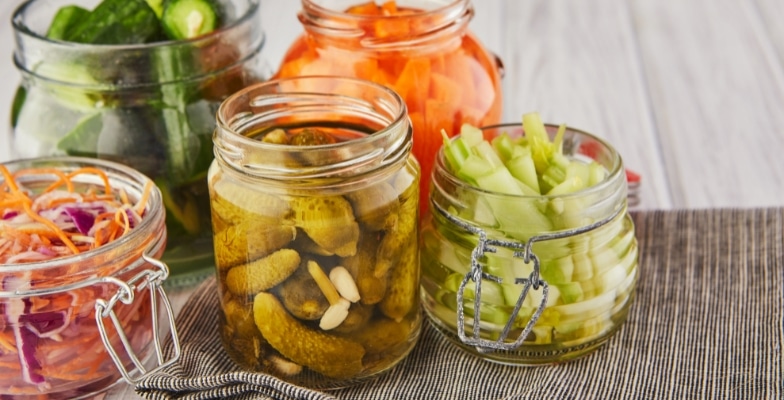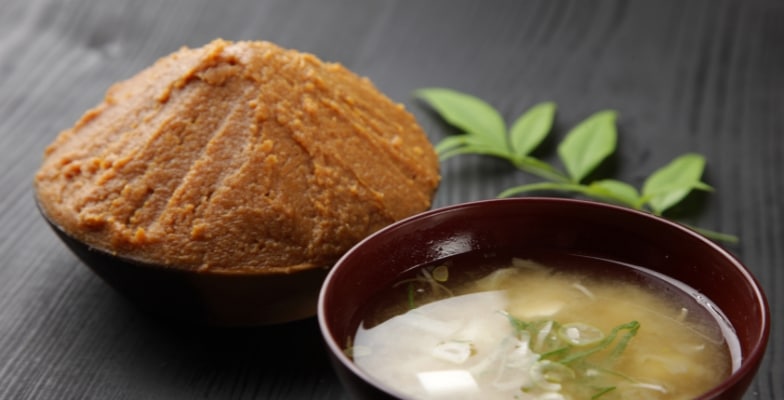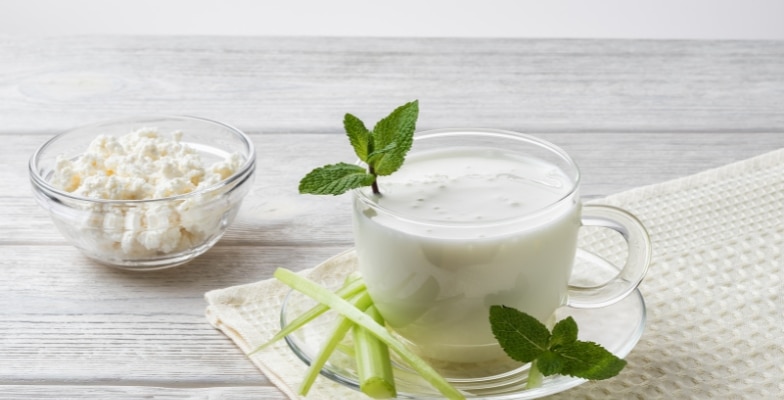Phytonutrients Definition | Phytonutrients Foods And Chart

Introduction
Phytonutrients are chemicals plants produce to protect themselves from insects, fungi, bugs, and UV rays. These powerful compounds give the plants their color, flavors, aromas, and disease-fighting capabilities. ‘Phyto’ is a Greek word that means plants.
Another name for phytonutrients is phytochemicals. Unlike vitamins and minerals, phytonutrients aren’t essential for keeping us alive. However, they play a super important role in optimizing our health.
Therefore, eating various plant-based foods is imperative to ensure a steady supply of phytonutrients. Phytonutrients are highly diverse, with more than 25,000 varieties currently identified.
Let’s discuss the following two major classes of phytonutrients in detail.
Types Of Phytonutrients
Carotenoids
Carotenoids are a class of phytonutrients that give fruits and vegetables yellow, orange, and bright red colors. There are more than 600 types of carotenoids, but the most common are carotenes and xanthophylls.
Carotenes contain hydrocarbons and no oxygen and help produce the orange color. Alpha-carotene and beta-carotene are some of the well-known carotenes, also collectively known as provitamin A. Lutein, zeaxanthin, beta-cryptoxanthin and lycopene are some of the known xanthophylls.
Let’s first discuss carotenes in detail.
Carotenes (Provitamin A)
Beta-carotene is the most widely studied provitamin, which readily converts into retinal and retinoic acid—the active form of vitamin A that the body can use.
There are many health benefits of foods rich in beta-carotene, like a reduction in cancer risk and heart disease risk. 1https://www.cancer.gov/about-cancer/causes-prevention/risk/diet/antioxidants-fact-sheet, 2https://www.sciencedirect.com/science/article/abs/pii/S0753332299801206?via%3Dihub Beta-carotene can also act as an antioxidant, thereby reducing the damage done by free radicals.
The most common foods high in beta carotene are red-orange fruits and vegetables like carrots, papaya, mango, sweet potatoes, squash, and cantaloupe. Green vegetables like kale and spinach are also loaded with beta-carotene.
There are also some promising studies showing that alpha-carotene, lesser-known provitamin A carotenoids, may help increase longevity. 3https://pubmed.ncbi.nlm.nih.gov/21098341/ More studies indicate that high blood levels of alpha-carotene are inversely associated with cardiovascular disease, cancer, and heart disease. 4https://pubmed.ncbi.nlm.nih.gov/16837766/
The foods rich in alpha-carotene are also rich in beta-carotene.
Xanthophylls
Beta-cryptoxanthin is also a provitamin but is called a xanthophyll as it contains the oxygen molecule. It is also a source of vitamin A, but the conversion rate is very poor at roughly 24:1.
Yellow fruits and vegetables like yellow bell peppers and mangoes are very high in beta-cryptoxanthin. It is also found in egg yolks and butter. Beta-cryptoxanthin is associated with lowered cancer risk, particularly in preventing lung cancer. 5https://pubmed.ncbi.nlm.nih.gov/14744731/
Lutein And Zeaxanthin
Lutein and zeaxanthin are the only carotenoids found in the eye. 6https://pubmed.ncbi.nlm.nih.gov/26541886/ The retina of the eye is composed of macular pigment (MP), which is located at the back of the eye. MP protects the eye from blue light (both natural and artificial) and helps improve overall vision. The main components of macular pigment are lutein and zeaxanthin.
Many studies have been done on the role that lutein and zeaxanthin play in slowing down or preventing the progression of age-related macular degeneration (AMD). 7https://pubmed.ncbi.nlm.nih.gov/25515572/, 8https://pubmed.ncbi.nlm.nih.gov/25637656/, 9https://pubmed.ncbi.nlm.nih.gov/25709776/ AMD is a leading cause of blindness in older people. 10https://pubmed.ncbi.nlm.nih.gov/22559899/
Food sources rich in lutein and zeaxanthin are dark green leafy vegetables like kale, spinach, peas, and lettuce.
Lycopene
The last of the well-known xanthophylls is lycopene. It is a plant pigment that gives red and pink color to fruits and vegetables. It is an antioxidant and is part of the carotenoid family. Studies show it is beneficial for heart health and may lower the risk of prostate cancer. 11https://pubmed.ncbi.nlm.nih.gov/22965217/, 12https://pubmed.ncbi.nlm.nih.gov/26817504/
The biggest sources of lycopene are tomato products such as tomato puree, ketchup and sun-dried tomatoes. This is because the processing of tomatoes in sauces and purees increases the bioavailability of lycopene. Other fruits that have a good concentration of lycopene are guava, papaya, pink grapefruit and watermelon.
Flavonoids
Flavonoids are a group of phytonutrients and are a subcategory of polyphenols. There are more than 6000 types of flavonoids, which are subclassified into 12 categories. Of the 12 subclasses, only six flavonoids are of dietary significance.
The six subcategories of flavonoids, along with examples and top food sources, are shown below:
Flavan-3-ols
Catechins | Bananas, Apples, Blueberries, Peaches, Pears, Green Tea.
Flavonols
Quercetin, Kaempferol, Myricetin, Fisetin | Onions, Kale, Lettuce, Tomatoes, Apples, Grapes, Berries, Tea, Wine
Flavones
Luteolin, Apigenin, Tangeretin | Celery, Parsley, Red Peppers, Chamomile, Mint, Ginkgo Biloba
Flavanones
Hesperetin, Naringenin, Eriodictyol | Oranges, Lemons, Grapes
Isoflavones
Genistein, Daidzein | Soybeans
Anthocyanidins
Cyanidin, Delphinidin, Malvidin, Pelargonidin, Peonidin | Cranberries, Black Currants, Red Grapes, Raspberries, Strawberries, Blueberries, Bilberries, Blackberries
Flavonoids are anti-inflammatory as they block the messaging molecules that promote inflammation. They can also act as antioxidants and protect us from free radical damage.
These groups of natural substances promote good cardiovascular and nervous system health. Studies also suggest flavonoids can protect us from certain types of cancer, although more studies are required to confirm this. 13https://pubmed.ncbi.nlm.nih.gov/19351659/
Let’s talk about the health benefits of flavonoids in some detail.
Health Benefits Of Flavonoids
Flavonoids And Cardiovascular Disease
Some of the established biomarkers of CVD are inflammation, oxidative stress, hypertension, and blood lipid profile. Let’s look at some studies that have investigated the effects of flavonoids on these biomarkers.
A study of 100 healthy adults concluded a 20-30% reduced 10-year risk of CVD and CVD-related mortality. 14https://pubmed.ncbi.nlm.nih.gov/26348767/ A 2014 systematic review concluded that dietary intake of all six sub-classes of flavonoids (as discussed above) significantly decreases the risk of CVD. 15https://pubmed.ncbi.nlm.nih.gov/23953879/
A meta-analysis of 8 studies with 5,228 stroke cases among 280,174 participants concluded a 14% reduction in developing stroke with higher consumption (20mg/d) of flavonol-rich foods. 16https://pubmed.ncbi.nlm.nih.gov/24342529/ In 2015, a study in the American Journal of Clinical Nutrition showed that a higher intake of anthocyanin and flavonol was anti-inflammatory in the US adult population. 17https://pubmed.ncbi.nlm.nih.gov/26016863/
Many other studies also came to the same conclusion that participants who ate berries rich in anthocyanins showed reduced levels of inflammatory markers, decreased LDL cholesterol, and improved insulin sensitivity. 18https://pubmed.ncbi.nlm.nih.gov/20797478/, 19https://pubmed.ncbi.nlm.nih.gov/16549461/, 20https://pubmed.ncbi.nlm.nih.gov/24334868/
A Cochrane review by Karin Ried et al. concluded that flavanol-rich cocoa products have a small but statistically significant effect in lowering blood pressure, decreasing it by 2-3 mm Hg in the short term. This Cochrane review is a meta-analysis of 20 studies involving 856 health participants. 21https://pubmed.ncbi.nlm.nih.gov/22895979/
Another meta-analysis found reductions in diastolic blood pressure by 1.6 mm Hg with an intake of cocoa or dark chocolates. 22https://pubmed.ncbi.nlm.nih.gov/22301923/
Summary
Flavonoids can significantly reduce the risk of cardiovascular disease.
Flavonoids are abundantly available in fruits and vegetables, therefore it’s important to include at least 5 servings of fresh, seasonal fruits and vegetables in your diet every day.
Green tea, dark chocolate, and even red wine can be enjoyed in moderation to get a supplementary dose of flavonoids.
Conclusion & My Recommendation
There is overwhelming evidence that eating a variety of plant-based foods provides not only essential vitamins and minerals but also phytonutrients that play a very important role in optimizing one’s health.
Three key takeaways from this article that will ensure you get maximum phytonutrient benefits in your diet:
1) Eat ~4 units of fruits and ~5 units of vegetables on a daily basis.
One unit can be equated to one medium piece of fruit, like one banana or apple. If it is a large fruit like watermelon, then one large slice will suffice. For practical purposes, it’s best to weigh your fruits and vegetables. You can consider 100g of any fruit or vegetable as 1 unit.
2) Try to ensure these are fresh, local, and seasonal.
3) Try to eat a rainbow diet!
As we have learned in this article, different colors come from different phytochemicals that provide unique benefits for your health.
Here are five charts showing different color groups of phytonutrients and their food sources.
[Coming Soon]

Skill-Based Education.
Global Recognition.
Powerful Community Building
Secure a certificate of completion in as little as a day by graduating from one of our free courses.
Get Access to Our Free Courses. No Credit Card Required.

Fabulous Body Membership
Your All-Access Pass to A Fabulous Body & A Rewarding Career
25+ Certificate Courses & Programs, All Included
15 Day Free Trial, 100% Money-Back Guarantee
About Akash Sehrawat
Akash is a creator of 25+ programs and certificate courses in which more than 200,000 students have enrolled both on Udemy and Fabulous Body's native platform. Akash is also an author of three books that can be found on Amazon. His answers on Quora have gathered more than 12 million views in less than a year.











very informative ..thank you
Thanks!